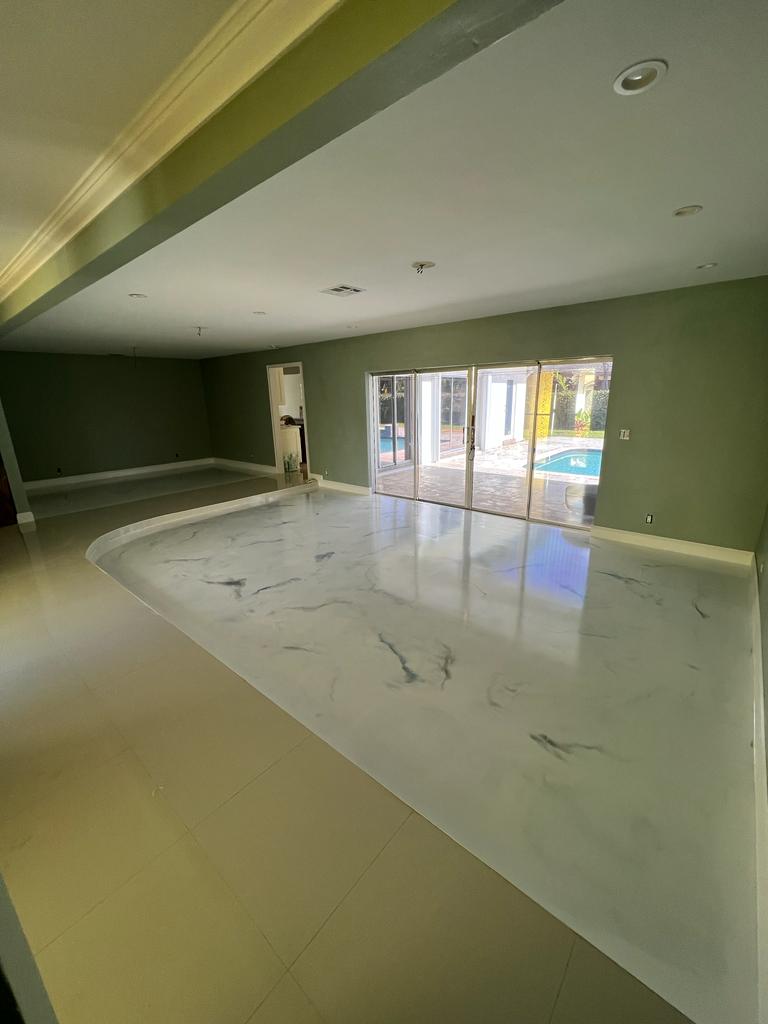Indoor air quality (IAQ) is an often overlooked yet critical factor that influences the health and comfort of building occupants. From homes to offices, the air we breathe indoors can harbor pollutants that contribute to allergies, respiratory problems, and other health issues. Amid rising concerns about IAQ, homeowners and businesses are turning to innovative solutions like epoxy flooring. Not only does this type of flooring provide a durable and aesthetically pleasing surface, but it also contributes to a healthier indoor environment. In this article, we explore how epoxy flooring can play a significant role in enhancing indoor air quality.
Understanding Indoor Air Quality (IAQ)
Indoor air quality refers to the condition of the air within and around buildings, especially as it relates to the health and comfort of the occupants. Common indoor air pollutants include volatile organic compounds (VOCs), dust, mold, bacteria, and allergens. These pollutants can arise from various sources, such as building materials, cleaning products, and everyday activities like cooking and smoking.
Common Indoor Air Pollutants
VOCs are among the most pervasive indoor air pollutants. They are emitted as gases from certain solids or liquids, including paints, varnishes, and flooring materials. These compounds can cause a range of health effects, from eye, nose, and throat irritation to headaches and even long-term respiratory issues. Other common pollutants include mold spores, which thrive in damp environments, and dust mites, which are often found in carpets and fabrics.
Importance of Choosing Low-VOC Materials
Given the potential health impacts of poor indoor air quality, it is essential to select building materials that minimize the release of harmful chemicals. Low-VOC materials emit fewer pollutants, thereby reducing the overall chemical burden on indoor air. This consideration is especially crucial in spaces where people spend significant amounts of time, such as homes, schools, and offices. By choosing low-VOC materials, you contribute to a healthier living and working environment, protecting both your health and the health of others.
Benefits of Epoxy Flooring for IAQ
Epoxy flooring offers several advantages that directly contribute to improved indoor air quality. One of its primary benefits is its low VOC emissions. Unlike many traditional flooring materials that off-gas harmful chemicals, epoxy coatings are formulated to release minimal VOCs both during and after installation. This characteristic makes epoxy flooring a preferable choice for those looking to maintain a clean and healthy indoor environment.
Low VOC Emissions During and After Installation
During the installation process, many flooring materials emit a variety of VOCs as they cure or dry. These emissions can continue long after the flooring is installed, contributing to ongoing indoor air pollution. Epoxy flooring, particularly low-VOC formulations, emits significantly fewer chemicals during the curing process. Once cured, it forms a non-porous, seamless surface that does not continue to off-gas, ensuring a long-term benefit to indoor air quality.
Resistance to Dust, Mold, and Bacteria
Another notable advantage of epoxy flooring is its resistance to dust, mold, and bacteria. The smooth, non-porous surface of epoxy prevents the accumulation of dust and allergens, making it easier to clean and maintain. Additionally, unlike carpet or tile grout lines, epoxy does not provide a hospitable environment for mold or bacteria to grow. This quality is particularly beneficial in areas prone to moisture, such as kitchens, bathrooms, and basements, where mold and mildew are common problems. By minimizing these pollutants, epoxy flooring helps maintain a cleaner, healthier indoor environment.
Comparative Analysis with Other Flooring Options
When compared to other popular flooring options like carpet, vinyl, and tile, epoxy flooring stands out for its positive impact on indoor air quality. Carpets, for example, are notorious for trapping dust, dirt, and allergens within their fibers. Even with regular vacuuming, these pollutants can accumulate over time, degrading air quality. Vinyl flooring, while more resistant to dust and allergens, often contains phthalates and other chemicals that can off-gas into the indoor environment. Tile flooring, while low on VOC emissions, has grout lines that can harbor mold and bacteria if not properly sealed and maintained.
Why Epoxy is a Healthier Choice
Epoxy flooring offers a distinct advantage over these materials due to its seamless, non-porous surface and low VOC emissions. Unlike carpet and vinyl, epoxy does not trap dust or emit harmful chemicals. It also lacks the grout lines of tile, which are prone to harboring mold and bacteria. This combination of properties makes epoxy a healthier choice for those concerned with maintaining optimal indoor air quality.
Case Studies
To illustrate the benefits of epoxy flooring on indoor air quality, several case studies highlight real-world examples of its effectiveness. For instance, a family in a coastal region suffering from persistent mold issues decided to replace their traditional carpet and tile with epoxy flooring. Within months, they reported a significant reduction in mold growth and an overall improvement in the air quality of their home.
Customer Testimonials and Experiences
Customers who have made the switch to epoxy flooring often share positive feedback about the improved air quality in their spaces. One homeowner noted that after installing epoxy floors, they experienced fewer allergy symptoms and a noticeable decrease in dust accumulation. Another commercial client, operating a busy gym, reported that the epoxy floors not only held up well under heavy foot traffic but also contributed to a cleaner, more sanitary environment for their patrons.
Epoxy flooring presents a compelling option for those looking to improve indoor air quality. Its low VOC emissions, resistance to dust, mold, and bacteria, and seamless, non-porous surface make it a healthier choice than many traditional flooring materials. Whether you’re renovating your home or outfitting a commercial space, consider epoxy flooring as a durable, aesthetically pleasing, and health-conscious solution. By choosing epoxy, you’re not just enhancing the look of your space—you’re investing in a cleaner, healthier environment.



